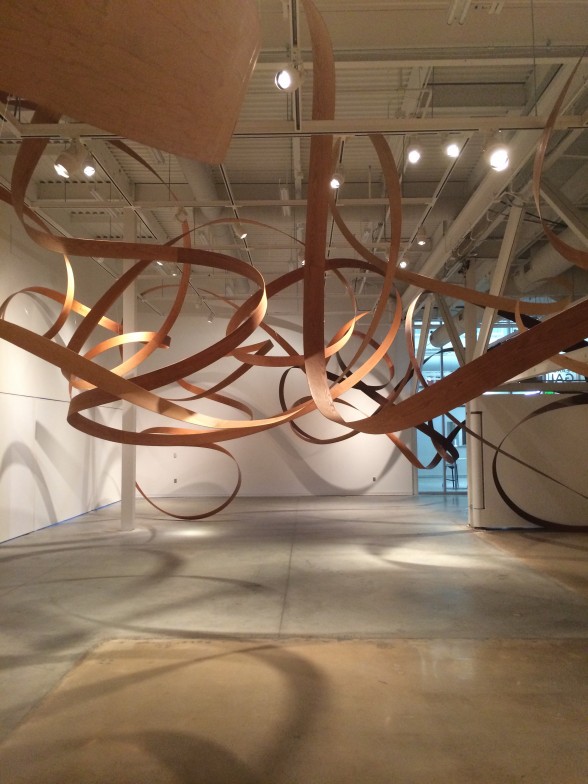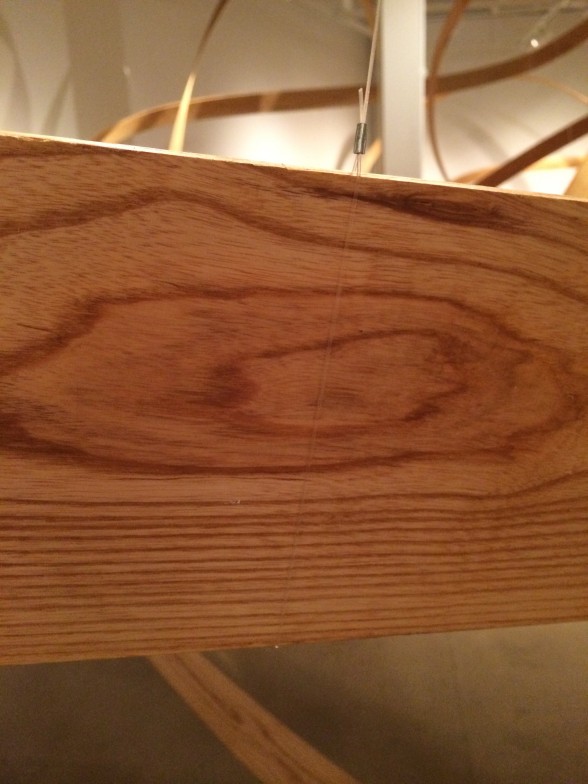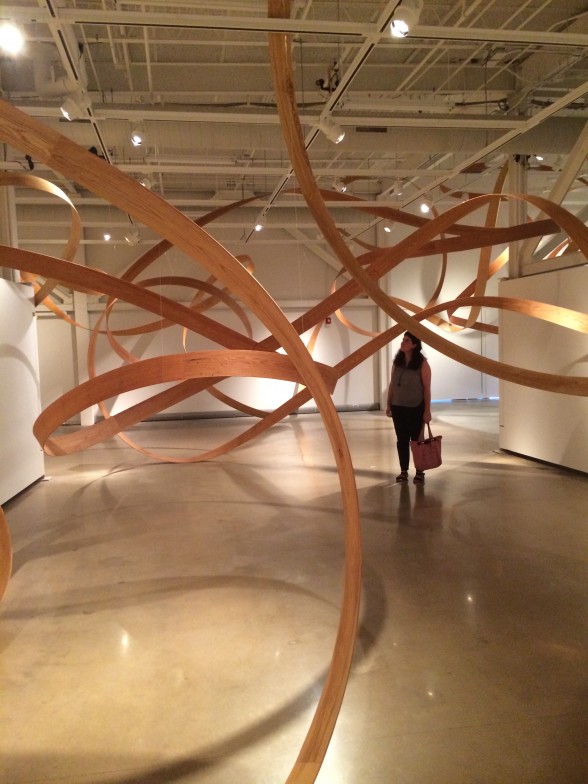[Alexander discusses how a site-specific wood installation combines craftsmanship and artistic endeavor. — the Artblog editors]
Confronted by installation art, a viewer is sometimes prevented from wandering through the work because it is neatly roped off or restricted by unspoken boundary lines.
This is not the case with Jeremy Holmes’ Convergence, now on view at Leonard Pearlstein Gallery. An environment of whimsy and calculated craftsmanship, the piece invites the public to meander through it.
Spinning through space

In an all-compassing, site-specific installation made especially for the gallery, massive ribbons of five types of North American hardwood snake through the space, grazing the floor and dancing above your head. Like a particularly excessive track for toy racing cars, with extreme loops and impossible bends, this installation plays with our expectations of natural elements. These strips of wood should be used to cover the gallery’s cement floor; they shouldn’t rebel and take flight! But they do, creating an unorthodox labyrinth that not only allows viewers to wind into its spirals and turns, but also cuts them off abruptly at the same frequency.

With its emphasis on materials, Convergence recalls 1970s Minimalism, which foregrounded industrial materials to sing their praises. But unlike Minimalism, Convergence is playful and engaging; call it “Accessible Minimalism”. And while the old distinctions between art and craft have fallen away, Convergence owes something to the worlds of woodworking and old-school craftsmanship.
Hanging only by transparent fishing line, Convergence is weightless, yet surprisingly sturdy; it’s stable, with its spontaneity lying in its planned form, as well as in its varying textures and stains. Its sense of movement comes from its curlicues and dreamy path, twisting around ceiling beams and filling gallery crevices with the ease of a summer breeze.
A new way of existing alongside art

When I was viewing this installation, I was reminded of the work of Richard Serra, whose use of natural elements in unconventional ways makes viewers stop and become cognizant not only of Serra’s giant work, but of how it controls and determines space, causing viewer to become aware of themselves and each other. Convergence works in a similar vein, determining the viewer’s path while allowing fate to decide the rest. Convergence is where fantasy and reality meet—where material is literally elevated to new heights, and where we consider a different way of being with art inside a gallery.
Convergence by Jeremy Holmes can be seen at Leonard Pearlstein Gallery at Drexel’s URBN Annex, 3401 Filbert Street, Philadelphia, PA 19104, from August 6, 2014 to September 28, 2014.
Alexander Fiorentino is a recent graduate of Temple University with a B.A. in art history and cultural anthropology; he hopes to continue his studies in post-war modern and contemporary art.









